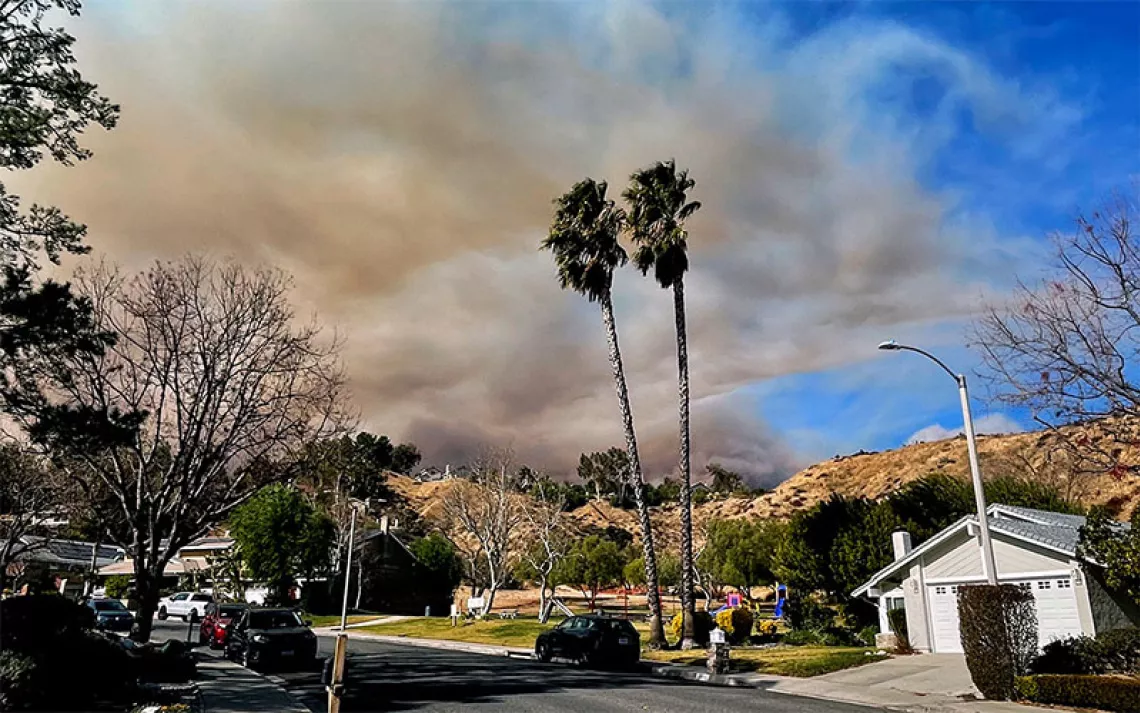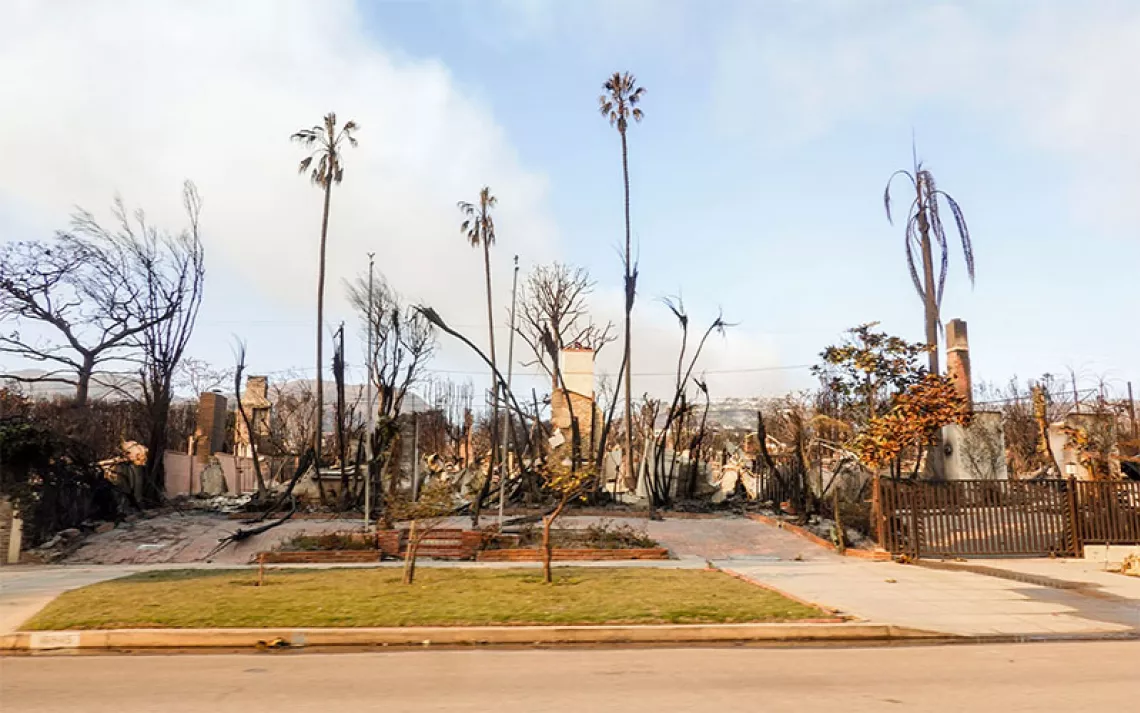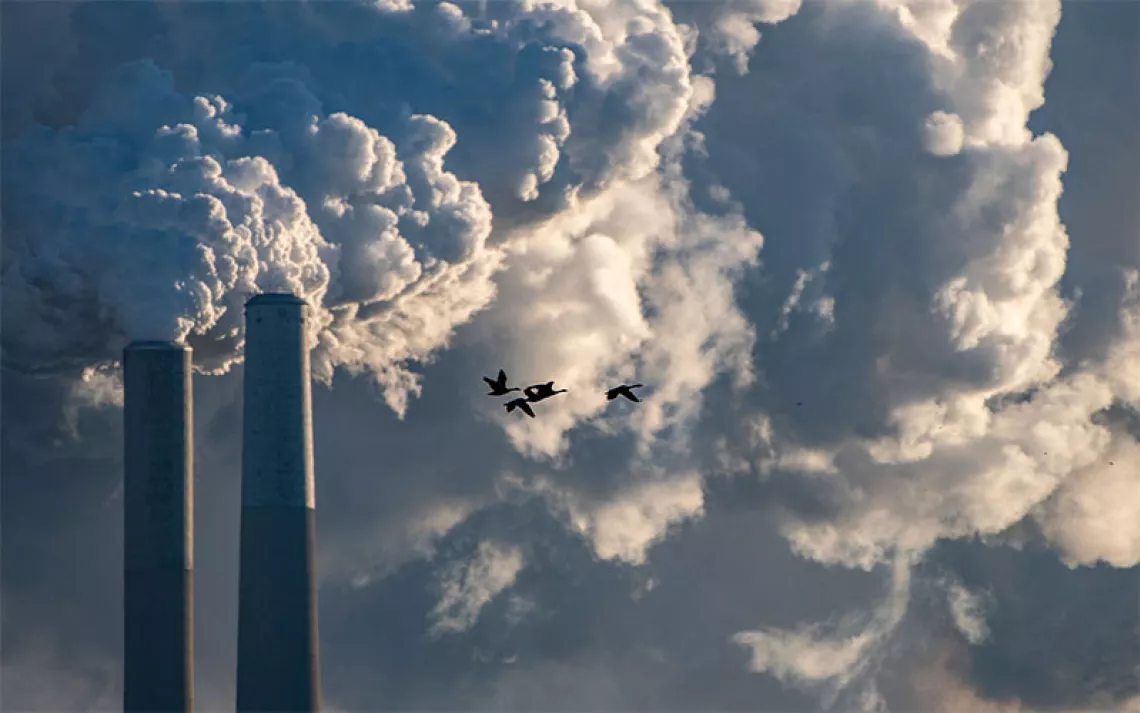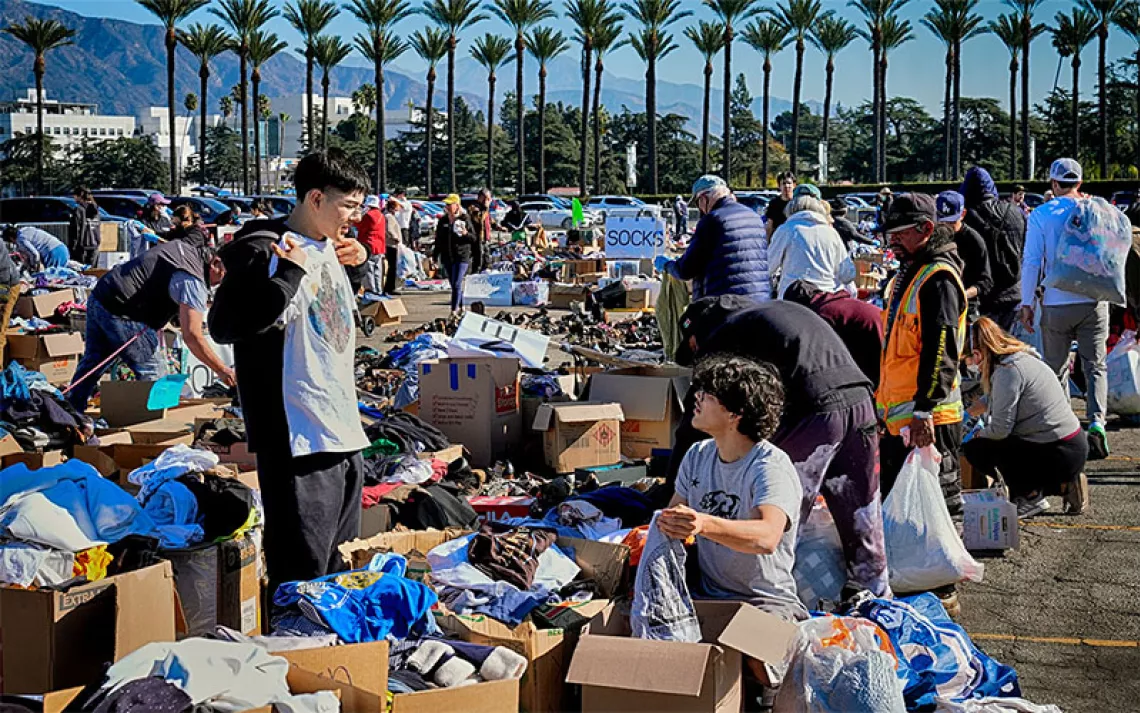Farmers Struggle to Adapt to Extreme Monsoons
In South Asia, floods and droughts are becoming more common

Houses surrounded by a flood of water in Dhaka City, Bangladesh, on August 8, 2021. | Photo by Mamunur Rashid/NurPhoto via AP
South Asian societies have developed over thousands of years around the annual monsoon, with agriculture supporting large-scale civilization in the Indian subcontinent. A predictable monsoon that arrives on time in early June and rains steadily means a good harvest, and a good year economically for both the region and the farmers who depend on their annual crop to survive.
Now, the climate crisis is making these seasonal rains—responsible for 80 percent of annual rainfall—increasingly unpredictable. In a region already planning for a deadly increase in heat and more catastrophic cyclones, the flood and drought of the new monsoon is having a disproportionate impact on the vulnerable—those least able to cope with the economic burden of a lost crop or home, not to mention lives lost altogether.
“The monsoon is part and parcel of daily life for people in South Asia. The entire agricultural system evolved around the monsoon,” said Monirul Mirza, who has studied rainfall and climate adaptation in Bangladesh for decades. “We need the monsoon, without it we can’t survive, but the problem is excessive rainfall.”
In 2019, the “worst floods in years” killed 119 in Bangladesh and displaced 200,000. Police carried children above waist-deep water through the submerged streets of Kathmandu, Nepal. The erratic monsoon, which lasted until mid-October in India, was described as an “unusual” season, but these purported outliers are becoming more frequent. In 2020, a quarter of Bangladesh’s landmass is flooded and millions have been displaced or are facing food scarcity because of flooding in India and Nepal.
Between 1950 and 2015, the amount of extreme rainfall events due to the monsoons have tripled, even as the overall precipitation declined due to the rapid warming of the Arabian Sea. Instead of several steady months of rain that the soil has time to absorb, there is a trend towards a cycle of lack and excess—unseasonal drought followed by torrents of rain that the land cannot absorb— causing flooding and mudslides. Most farmers in India don’t use groundwater and are completely dependent on the annual rains for the success of their crop. Both drought and floods can mean missing a harvest.
“When I was a child, the distribution of rainfall was quite uniform over the monsoon. But now we see the frequency of heavy spells increasing, but at the same time we see dry spells increasing. This is a problem. The heavy spells cause flooding, and the dry spells cause drought,” Mirza said. “The behavior of the monsoon is a double-edged sword.”
As the climate changes, disaster strikes more frequently and with greater intensity. But the destruction is not evenly distributed. India alone accounted for 10 percent of global economic losses from flooding in 2015. Even within countries, those most affected by climate-influenced disasters are often the same people least capable of coping.
Ajaya Dixit is a hydrologist and climate scientist. He also helps Nepali people get back on their feet after floods as executive director of the Nepal branch of the Institute for Social and Environmental Transition International. “It’s small landholders, women, and marginalized families who don’t have the resources to bounce back,” Dixit said. “After the flood recedes, recovery is going to depend on your economic condition.”
During floods, people who are dependent on hand pumps for water go thirsty, and small farmers watch their crop get washed away. Sometimes, sand buries entire fields, rendering them useless for growing crops.
“The problem is who is being affected by these losses. It’s mainly poor people, marginal farmers who live in low-lying areas. Their livelihood is lost. In India and Bangladesh and Pakistan, around 70 percent of employment comes from the agriculture sector,” Mirza said.
Lost income drives small farmers without savings into debt which many can never escape. Financial burden is a key driver of the farm suicide crisis in India. Climate change is another. Rising temperatures, monsoon drought or flooding, and cyclones can each wipe out a farmer’s investment. When disasters come one after another, recovering is even more difficult.
“The problem is, if it happens frequently, then the burden has been multiplied,” Mirza said. “This year in Bangladesh, a cyclone hit in May in the coastal areas. And then after that, in June, we had a flood event. So far three floods have hit Bangladesh, and the weather forecast shows they could go on until the end of August.”
The fall cyclone season begins in September.
Small farmers in South Asia are caught in a double bind: they need financial stability to be able to weather the instability of a changing monsoon, but the frequency of disaster makes it impossible to prepare in time for the next one. In South Asia, access to financial stability is a part of climate adaptation.
“What does adaptation mean in a practical sense, how do you translate it into a local context?” asked Dixit, who has studied the issue. “It depends on if you have access to things like clean water, sanitation, and sources of income for financial support.”
Because economic stability is a key part of a family’s ability to rebuild their lives after a flood or drought, Dixit thinks government-funded crop insurance could help farmers weather the variability of the changing monsoon. As the climate continues to change, no crop will be a guarantee.
Mirza hopes that collaboration between countries can help everyone be better prepared. By sharing real-time data on rainfall, Nepal, India, and Bangladesh could help save lives downstream. The climate isn’t getting any more predictable. If 2019 was an outlier season, 2020 is as well.
 The Magazine of The Sierra Club
The Magazine of The Sierra Club



